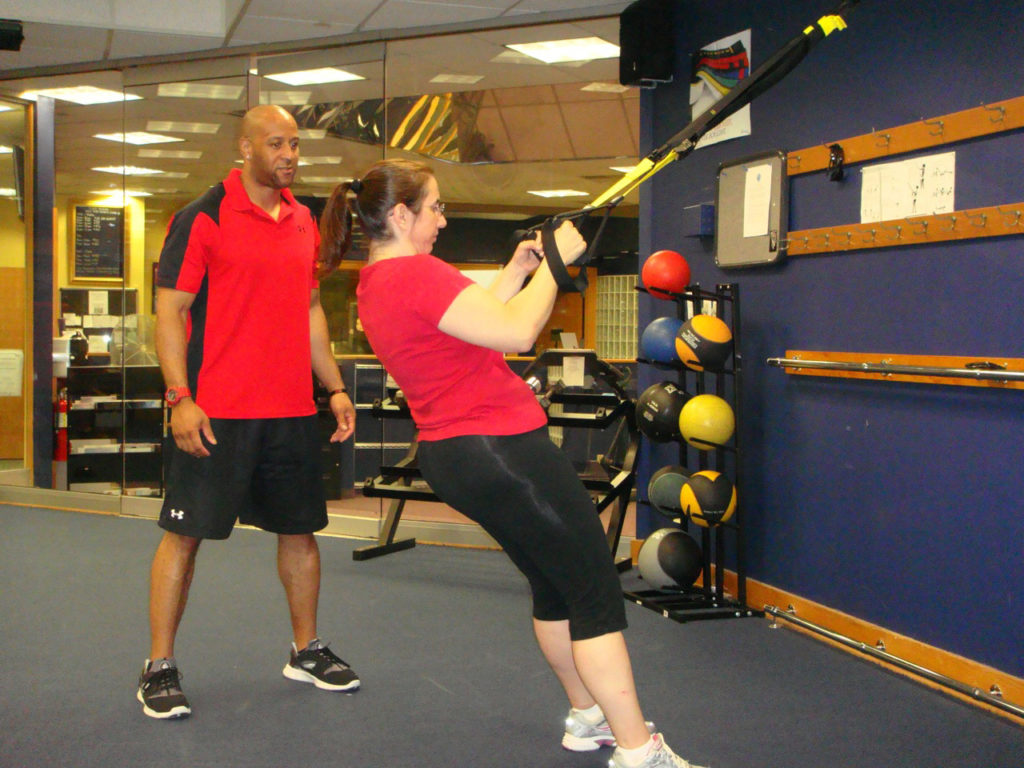
Restoring the Injured Athlete
Client: Dana
Personal trainer: Michael Piercy, owner, The Lab
Location: West Caldwell, New Jersey
Injury. When Michael Piercy, owner of The Lab (Performance & Sports Science), first met Dana in the summer of 2008, she presented with a rare condition described by doctors as “functional movement disorder.” According to The Lancet Neurology (2012; 11 [3], 250–60), functional movement disorders are included in a wide spectrum of neurological disorders and are difficult to both diagnose and treat.
In Dana’s case, an arm lock during judo competition in 2002 resulted in her inability to use the muscles in her left arm. Despite several surgeries, her symptoms worsened. “I was getting spastic shakes and tremors in my left arm, and my arm would get stuck up to my ear,” she recalls. “In the summer of 2007 my leg joined the problem, and I was not able to walk normally. I was having pseudo seizures—at a certain point I had shaking in my left leg, my eyes twitched, and I lost my voice and ability to swallow.”
Dana was referred to a holistic chiropractor who helped reduce her symptoms through chiropractic manipulations, homeopathic treatments and nutritional supplements. Inspired by the regained use of her arm and ability to walk normally, she decided to return to judo practice.
Next steps. Dana began practicing a bit of judo and dance, but still felt limited and out of shape. She decided she needed an extra push to return to her preinjury state. “I joined a class at the gym—a circuit training session,” she says. “That is when I found Mike, the best trainer available.”
She liked Piercy’s careful attention to all class participants. He knew everyone’s name and appeared familiar with each individual’s physical abilities, challenging them appropriately. “As an athletic person with a slightly disabling condition, I needed that understanding.”
Research and practice. Piercy describes Dana as “an extremely hard worker who enjoyed the physical challenges the [circuit] class presented. She was always asking questions and trying to learn progressions and modifications to the exercises used in class.”
When the two began working together, Piercy immediately focused on understanding Dana’s condition. Research on the topic was limited, so he decided to go right to the source: Dana. “In order to write [exercise] programs, we spent a considerable amount of time discussing Dana’s challenges during exercise, as well as some things that affect her on a daily basis,” Piercy says.
They quickly decided that because of the propensity of the left side of her body to fatigue, two necessary components of every training session should be balance and stability.
The inner athlete. Piercy and Dana also worked hard to restore activation in muscles she believed were dormant. To appeal to Dana’s athletic side, Piercy incorporated challenges similar to what Dana experienced in judo. “Her program needed to allow her to move dynamically through all planes of motion, while empowering her to believe she had the ability to do so.”
Dana’s efforts yielded results quickly; she returned to judo training in less than a month and to competing in a month and a half.
Currently, a typical session with Dana consists of self-myofascial release, mobility work and movement prep. Her increased athletic ability allows incorporation of a variety of unilateral exercises that she uses for each side of her body. “TRX® Suspension Trainers™, TRX Rip™ Trainer and ViPR™ have become staples in her program [because of] each tool’s ability to help her train in all planes of motion.”
Understanding. Dana’s improvements were substantial; however, she and Piercy remain vigilant regarding exercise intensity, volume, output and rest periods. Her left side can tire quickly, causing her to lose muscular control.
“When working with Dana, the object of our training program was to add things to her life, not take them away,” says Piercy. “The programming was geared toward helping her regain the athletic enrichment she lacked due to her condition. I would also reiterate that when dealing with clients who have similar rare [disorders], it is absolutely necessary to research the condition extensively to provide the appropriate programming.”